[ad_1]
There is something about humans which makes us not only want to adapt and change our own habitats and homes, but that of other creatures. Generally, the more natural an environment the better it is for wildlife to flourish. Given that most school grounds are highly artificial outdoor spaces, then providing artificial homes for minibeasts seems quite normal these days. It can also be a good way of repurposing unwanted items. Following on from my blog post about log piles, thought it might be fun to share some of the posher alternatives I’ve come across over the years.

Firstly, commercial homes are now available for bees and other winged insects. You can have a humble “bungalow” as featured above or a high rise multi-storey apartment. In the example below, the accommodation varies on each level to suit differing needs and tastes.
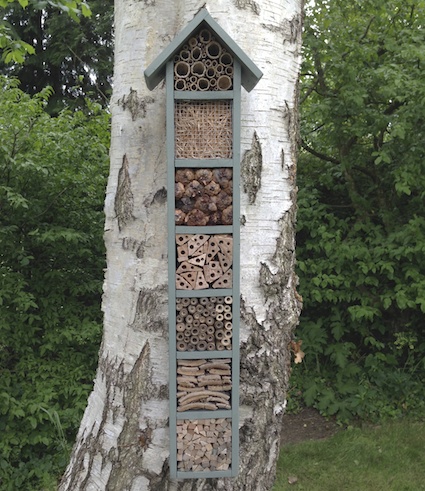
Naturally, a camouflaged compact and bijou apartment is a must for some insects. The placement of the post below is ideal as it’s well hidden amidst the foliage. We all like a bit of greenery around our accommodation!

Stacking logs is a popular DIY approach to creating des-res minibeast properties. You may wish to go for a single wall wood stack, which looks as if it’s been developed through drying wood for home fires. The version below is at Alftreton Nursery and enables children to examine the variety of widths and individual characteristics of cross-cutting sections.
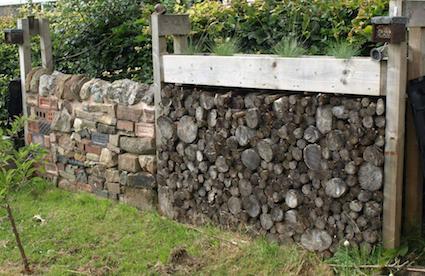
Below is a rather beautiful, if rustic, halfway house between a woodstack and a pallet-based minibeast hotel…
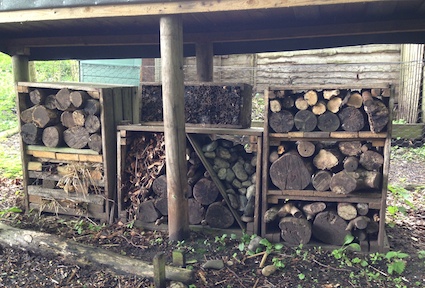
Should you wish to be more ambitious, you could zone your outdoor space through wood stack walls. The example below is at the RSPB Mersehead Reserve in Dumfries & Galloway. What you can’t see is that bamboo canes have been inserted into the cracks to add additional living space for insects such as solitary bees.
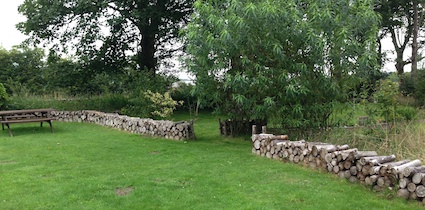
The wood stack boundaries can have their biodiversity value further increased by the addition of a turf “roof” which has a variety of low growing plants and mosses on top which provide shelter and protection within the spaces below.
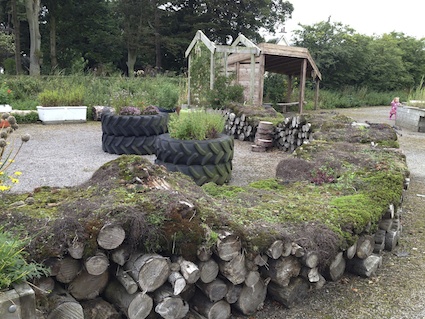
Wood stacks have a lot of potential. Look at how one school has created a wooden seating arrangement that is also a wildlife habitat….
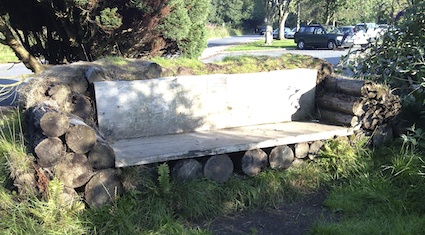
Raised minibeast habitats can also be found, such as this example which is a very accessible child-friendly viewing station, also at RSPB Mersehead.
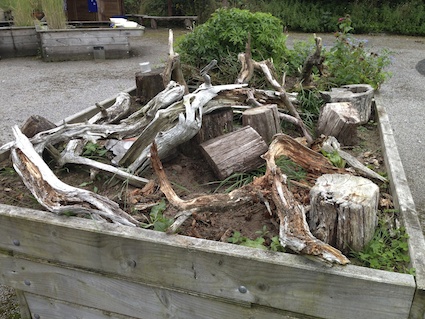
Stumps and decaying wood can also be presented as a landscape feature. The example below is at the intersection between three paths and you can just see the signpost in the centre. The use of stumps and decaying wood was a key feature at the WWT Martin Mere Reserve.

There is no need to stick just to wood. The informal stone pile around this dustbin will provide safety and shelter for small mammals as well as beasties.
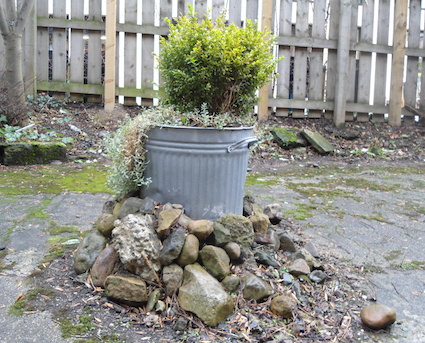
And of course, occasionally large mammals like ourselves require shelter. In the den below, the brashings and dead plant material have been piled over the wooden structure creating a useful minibeast habitat above our heads.
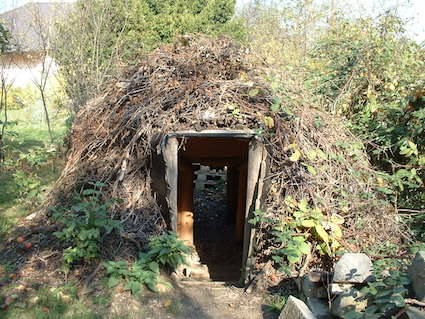
Finally, minibeast homes can be work of art too. Have a look at this sculpture which is a minibeast home as well.
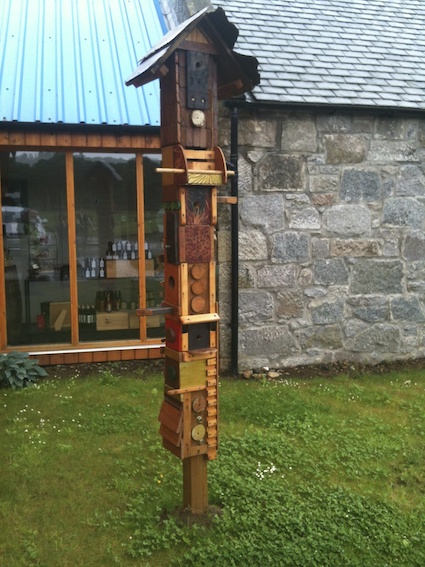
Finally, a lovely blog post about making a bug house can be found on Niki Willow’s Rounded and Grounded blog. There’s other examples online – just google and enjoy the images and array of instructions to be found.
I know there’s lots more examples of human home-making for minibeasts and I would love to know more about them. Meanwhile enjoy the variety of creatures you find all around you, outside.
This blog post first appeared in May 2014.
Related
[ad_2]
Source link


More Stories
Transforming Appearances with the Perfect Hairpiece Touch
Exploring the Wonders of Modern Sciences
How Sciences Unlock the Mysteries of the Universe